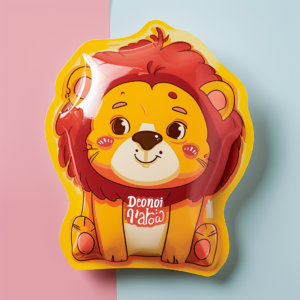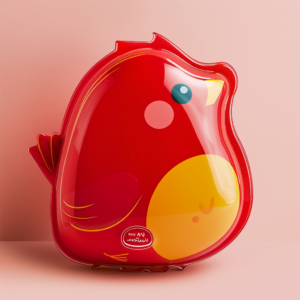In today’s fast-changing market, packaging is not just about protecting a product—it plays a critical role in brand identity, market positioning, and customer experience. Companies in industries such as food and beverage, pet supplies, consumer electronics, medical and industrial products, and retail and CPG are all seeking ways to meet evolving market demands while reducing costs and ensuring sustainability. Traditional printing methods are increasingly unable to meet these needs effectively. In contrast, digital printing offers clear advantages in cost savings, flexibility, and environmental benefits.
This article explores the key advantages of digital printing over traditional printing methods, highlighting how it can enhance your packaging strategy while lowering costs, improving flexibility, and promoting sustainability.
1. Cost Benefits of Digital Printing: Ideal for Small Batches and Customization
For many businesses, controlling packaging costs is a top priority. Traditional printing methods like flexographic and gravure printing can involve high initial costs, especially when it comes to small batch runs. Digital printing, however, offers significant cost advantages:
Lower Initial Investment
Traditional printing methods often require expensive plates and setup processes. In contrast, digital printing eliminates the need for plates, significantly reducing upfront costs. This makes it more accessible for businesses that need to produce smaller quantities or frequently change their packaging designs.
Cost-Effective for Small Batches
Traditional printing methods generally require larger order volumes to be cost-effective, which can be a disadvantage for businesses that need small batch runs. Digital printing, however, excels in small-scale production. You can print exactly what you need, reducing waste and eliminating the need for large minimum order quantities.
Reduced Inventory and Waste
With traditional printing, businesses often end up with excess stock due to the larger order
requirements, leading to waste. Digital printing allows for precise, on-demand production, reducing the need for excess inventory and minimizing waste. This is particularly useful for industries where product packaging designs change frequently, such as food and beverage or seasonal promotions.

2. Flexibility with Digital Printing: Quickly Adapt to Market Changes
As consumer preferences and market trends shift rapidly, businesses need to be able to respond quickly and efficiently. Digital printing offers exceptional flexibility to adapt to changing market demands:
Faster Turnaround Times
Unlike traditional printing methods, digital printing does not require long setup times for plates or color adjustments. This makes digital printing ideal for quick production runs, allowing businesses to get products to market faster and respond more efficiently to market changes or seasonal demands.
Easily Customizable Designs
In traditional printing, customization is often time-consuming and expensive due to the setup requirements for each new design. With digital printing, businesses can easily make changes to designs and print smaller runs of different variations, enabling rapid product line updates, personalized packaging, or promotional designs. This flexibility can significantly improve time-to-market and help businesses stay competitive.
Small Batch Production Without High Costs
One of the biggest advantages of digital printing is the ability to produce small batches at a lower cost. Traditional methods often require large batches to be cost-effective, which isn’t feasible for businesses that need to produce limited quantities. Digital printing eliminates this issue, allowing businesses to produce the exact quantity they need without incurring unnecessary costs.
3. Environmental Benefits of Digital Printing: Meeting Sustainability Goals
As sustainability becomes an increasingly important concern, businesses are under pressure to adopt environmentally friendly practices in their operations. Digital printing has several key advantages in this area:
Lower Waste and Reduced Chemical Use
Traditional printing methods often involve significant waste due to excess ink and chemicals. Digital printing, however, is more precise, with ink applied only where needed, reducing waste. Additionally, many digital printing processes use fewer or no harmful chemicals, resulting in less environmental pollution.
Compliant with Environmental Certifications
Many regions have strict environmental regulations regarding packaging, and digital printing helps companies comply with these requirements. Digital printing uses eco-friendly inks such as water-based and plant-based inks, which meet safety standards for food contact and are less harmful to the environment. This allows businesses to meet regulatory requirements and consumer expectations for sustainable products.
Supports Recyclable and Compostable Materials
Digital printing is compatible with a variety of recyclable and compostable materials, making it easier for businesses to reduce their environmental footprint. Whether using flexible or rigid packaging, digital printing enables businesses to use sustainable materials that align with eco-friendly goals, helping them move toward a circular economy.
 4. Conclusion: Why Digital Printing is the Future of Packaging
4. Conclusion: Why Digital Printing is the Future of Packaging
Digital printing offers numerous advantages for businesses in the food and beverage, pet supplies, consumer electronics, medical and industrial products, and retail and CPG sectors. With its ability to reduce costs, improve flexibility, and meet sustainability goals, digital printing is revolutionizing the packaging industry.
Key Advantages:
- Cost Savings: Lower initial investments, cost-effective small batch production, and reduced waste make digital printing a more economical choice for many businesses.
- Flexibility: The ability to respond quickly to market changes, easily adjust designs, and support small batch runs ensures that businesses can remain competitive in a dynamic market.
- Environmental Benefits: Reduced waste, fewer chemicals, and compatibility with recyclable materials make digital printing an environmentally responsible choice.
For purchasing managers, operations directors, brand owners, and other decision-makers, digital printing provides a powerful tool to optimize packaging production, reduce costs, and meet the growing demand for sustainable solutions. As the packaging industry continues to evolve, digital printing will play an increasingly important role in helping businesses stay ahead of the competition and meet both customer expectations and regulatory requirements.
If you are looking to improve packaging efficiency, reduce costs, and achieve sustainability goals, digital printing is the solution you need.


